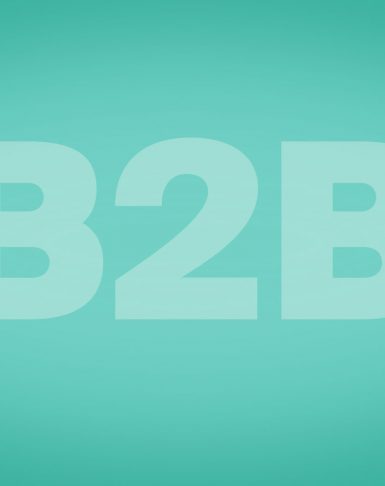This article originally appeared on Global Banking & Finance Review.
If thinking about putting money aside for retirement makes you want to reach for a drink, you’re not alone. At least if that drink is coffee. According to a survey from LendEdu, more than 1 out of 4 millennials (those born between 1981 and 1996) spend more on coffee each month than on their retirement savings.
It’s just one example of the shifting financial habits and attitudes towards saving of this generation. Yet, while the spending and saving habits of millennials have changed from those of older generations, Financial Services are not keeping pace. This is a problem. Indeed, as of 2017, millennials became the dominant generation in the work force. About 56 million millennials are either working or actively seeking work, compared to 53 million Gen Xers and 41 million baby boomers.
Despite a raft of app-based ‘neo banks’ being hailed as disruptors, we haven’t really experienced any meaningful disruption in Financial Services. A good app-based user experience might make some elements of the customer experience more efficient, but it doesn’t disrupt the underlying ecosystem.
The industry’s inertia is apparent in statements like “millennials are less interested in saving”, and in the misguided plethora of ‘help to buy’, ‘help to save’ products and tax breaks aimed at coaxing young people into the same old system as their parents, a system based on home ownership. A whopping 75 percent of millennials are currently in debt. A recent YouGov survey found that 42 per cent of millennials say that debt repayments are a significant chunk of their outgoings. In fact, it found that more than one in five 25-to-34-year-olds say they spend more than 60 per cent of their income the day it enters their account.
Creaking under the weight of this debt, combined with suppressed wages and high rents, of course millennials don’t want to save in the same way their parents did (just with a slick app and a metal bank card).
Inherent in this inertia is a huge opportunity. Legacy systems and processes being digitised is a first step. KPMG forecasts that 2020 will be the tipping point for legacy tech, especially Enterprise Resource Planning (ERP) systems, the underlying technology that runs back office business processes.
By 2022, it is suggested that 80% of all systems and services will be based on ‘big data’ and, by 2024, 5G will provide infrastructure to deploy IOT. With technology enabling revolutionary change, plus a generation of early adopters who, by a combination of circumstance and mindset, take a radically different approach to their predecessors, the stage is set for an imminent technological revolution in Financial Services.
The roll-out of PSD2 in 2018 effectively legislated a move away from the individualistic approach to banking and paved the way for Open Banking. One year on from this ‘quiet revolution’ we can see FinTech upstarts like Bud, Chip and the larger goliaths of the industry like HSBC’s Connected Money and ING’s Yolt begin to rethink their offering to behave as ecosystems.
This future is interconnected, collaborative and frictionless, and it’s here now. The millennial consumer will redefine the customer proposition, and investment, saving or pension advice will be personalised to income and spending habits. In this future, data will be king, and the platform model will be the only game in town, while distributed ledger and machine learning do the heavy lifting in the background.
With information and technology primed to revolutionise the way Financial Services work with its customers, there is no reason for a generation of millennials to sleepwalk through their financial lives. Even with a healthy dose of coffee. The opportunities are there; financial service brands just need to take them.
Simplicity and clarity is going to be more important than ever and Financial Services might want to follow three clear branding rules to reach the millennial market:
Be clearer and quieter
Differentiation is important and when competitors are springing up, and an already saturated market place is being compressed, it can be tempting to shout louder about who and what you are in an effort to be heard over the noise. But the way to stand out is not always by shouting louder, but rather being clearer about who you are and what you do. Ruthless simplicity, underpinned by unwavering conviction of values and message, carries better in a crowded environment. It’s testament to the adage that a whisper truly can be louder than a shout.
Human-centred in every channel, always
Know your audience: its needs and how individual journeys flow through your channels. Your customer will interact with touchpoints online and offline in a single customer journey. So, you need to be clear on the goal of each touchpoint. The aim should be cutting out unnecessary steps and pain points to ensure that where a customer does interact with you, the experience surprises and delights by doing exactly what is needed – nothing more, nothing less.
Innovation mindset:
It’s not only a brand that must have strength in flexibility, but your workforce must too. We need to rethink our marketing mindset to stretch and be more agile. Spotting lateral thinkers and innovators to hire is tough, but one thing that guarantees creativity and innovation is diversity of thought. Siegel+Gale published research recently demonstrating that men from a high social background with a parent in Financial Services are 36% more likely to apply for a role within the industry than a woman from a lower social grade background. Meaning if you pick from your normal talent pool, you are more likely to be hiring legacy thinking. Championing diversity of thought but also giving people a shared sense of ownership of a unifying employer brand is the best way to build a culture of innovation.


